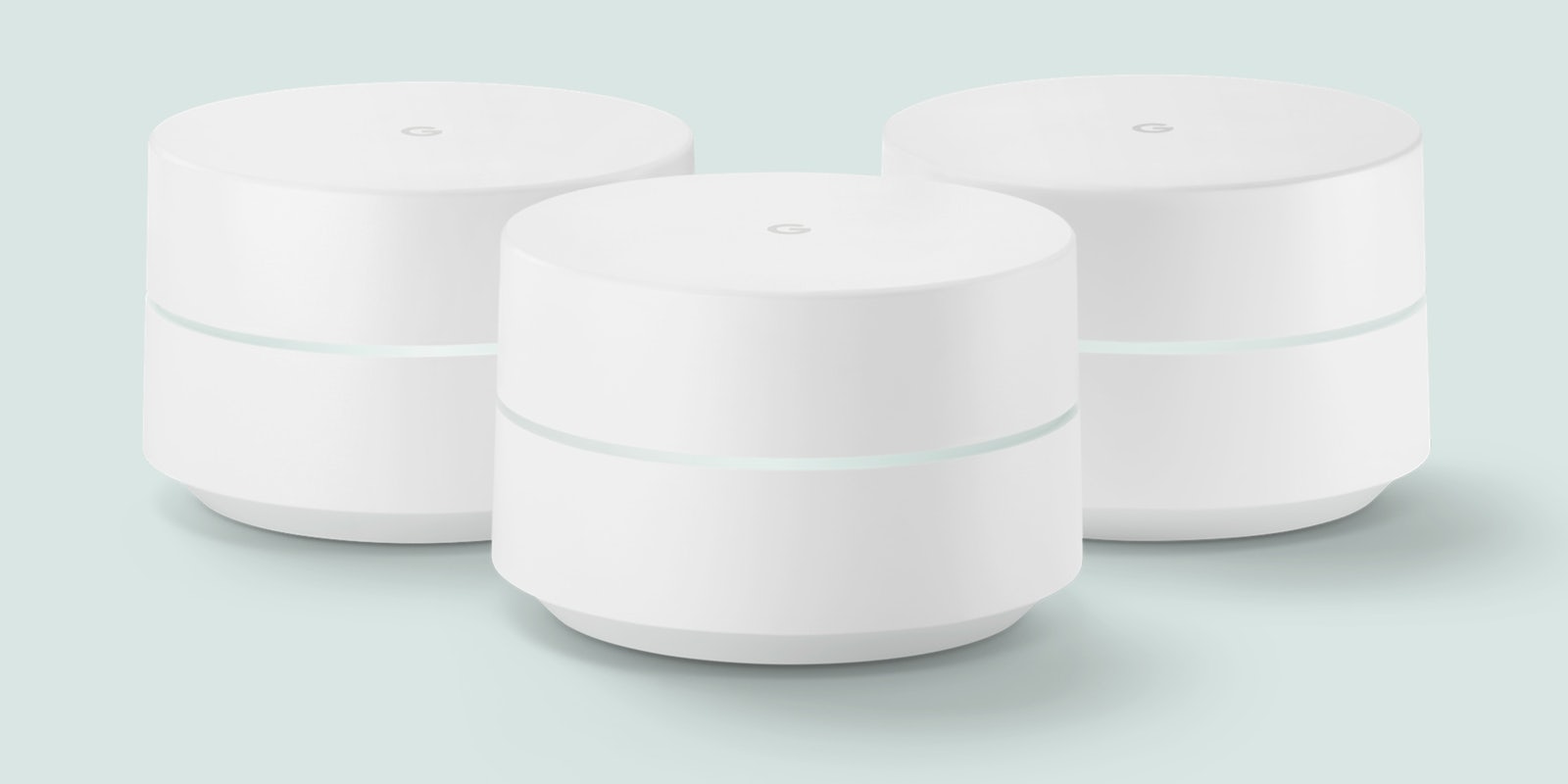If your Wi-Fi signal is slow or patchy in some areas of the house, Google may soon solve that problem.
Google previewed a slate of new products this week that includes Google Wi-Fi, a set of Wi-Fi points designed to be placed throughout your house. The concept is known as “mesh Wi-Fi.” It uses multiple Wi-Fi points instead of the centralized router systems most of us are accustomed to. Google Wi-Fi points are expandable—you can buy as many as you need—and are designed to connect to each other.
Interestingly enough, Google only just released a Wi-Fi router last year, Google OnHub. According to Ars Technica, if you own a Google OnHub already, you don’t need to pick one over the other. A Google OnHub router can be used as a node in your Google Wi-Fi network.
If you’re a heavy gamer, love streaming video, or live in a house with people that fit those categories, mesh Wi-Fi is certainly an attractive prospect. Parents will no doubt love that Google Wi-Fi’s app allows you to shut off the Wi-Fi during homework time or whenever else you choose.
READ MORE:
- 5 simple things you need to do to get faster Wi-Fi
- MIT’s new tech turns Wi-Fi signals into X-ray vision
- Here’s how to get free Wi-Fi at airports all over the world
But there are a couple of reasons that Google Wi-Fi may give you pause. Mesh networks have gotten a bad wrap in recent years for still being slow, spotty, and expensive. Mesh networks have traditionally been used in emergency and disaster scenarios.
Mesh networks are cheap to set up and require no centralized network for set-up. According to Wired, the only way to shut down a mesh network is to shut individually shut down every node in the network. Recent advancements in mesh technology have been faster and more consistent, but the jury’s still out on how fast Google Wi-Fi will be when compared to a centralized Wi-Fi network.
Google Wi-Fi is priced at $129 for a single pack and $299 for a three-pack. It’s being released in November. A single access point should cover a 1,500 square-foot home.



